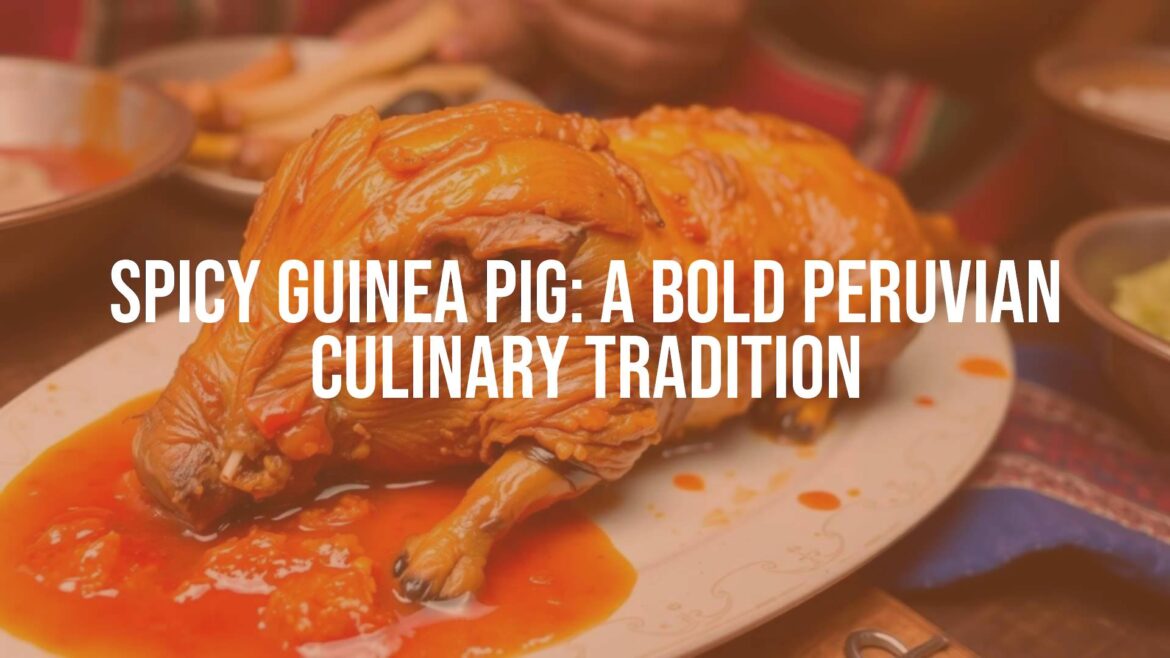Exploring Spicy Guinea Pig in Peruvian Cuisine
Among the array of unique dishes that define Peruvian gastronomy, spicy guinea pig stands out as both a flavorful and culturally rich delicacy. Known locally as “cuy picante,” this dish is rooted in centuries of Andean culinary traditions and continues to be a symbol of celebration and communal gatherings throughout Peru.
What Sets Spicy Guinea Pig Apart?
Spicy guinea pig captivates the palate with its combination of tender meat and robust seasoning. The star ingredient, guinea pig, is considered a delicacy in the Andean region, prized for its succulent texture and slightly gamey flavor. The signature heat typically comes from native Peruvian chili peppers, which infuse the dish with both spice and depth. The result is a vibrant plate featuring golden, crispy skin and a colorful sauce, often tinged with shades of red or orange due to the use of aromatic spices and peppers.
Time-Honored Origins and Cultural Resonance
Consumption of guinea pig dates back to pre-Columbian times, when the animal was domesticated by ancient Andean peoples. Guinea pig remains a staple at both family meals and festive banquets, particularly in regions such as Cusco, Arequipa, and the highland communities. The spicy variation not only pays homage to indigenous flavors but also represents the dynamic fusion of traditions across Peru’s diverse landscape.
Preparation Methods and Key Ingredients
Preparing spicy guinea pig typically involves marinating the whole animal in a blend of native herbs, garlic, and, most notably, ají peppers—especially ají amarillo and rocoto. These chilies give the dish its trademark heat and unique perfume. The marinated meat is usually fried, roasted, or baked until the skin turns crisp. The spicy sauce, sometimes thickened with ground peanuts or breadcrumbs, is poured generously over the animal, adding a new dimension of flavor and texture.
Serving Traditions and Visual Appeal
Cuy picante is traditionally served whole, often accompanied by boiled potatoes, corn on the cob (choclo), and a side of vibrant salads. The presentation is both rustic and festive, showcasing the entire guinea pig atop a colorful bed of local produce. This visual spectacle is a testament to the communal spirit of the dish, as it is most often enjoyed at large gatherings and special occasions.
Regional Variation and Enduring Popularity
While spicy guinea pig is most closely associated with the highland regions, each locality imparts its own touch—ranging from differences in spice levels to the use of specific herbs and peanuts. Despite globalization and changing food trends, the dish remains a beloved icon of Peruvian hospitality, inviting locals and adventurous visitors alike to partake in a genuine Andean experience.
Whether encountered at a bustling festival or a family table, spicy guinea pig embodies the vibrancy, resilience, and warmth of Peruvian heritage, making it a must-try dish for anyone seeking to understand the heart and soul of this remarkable cuisine.


